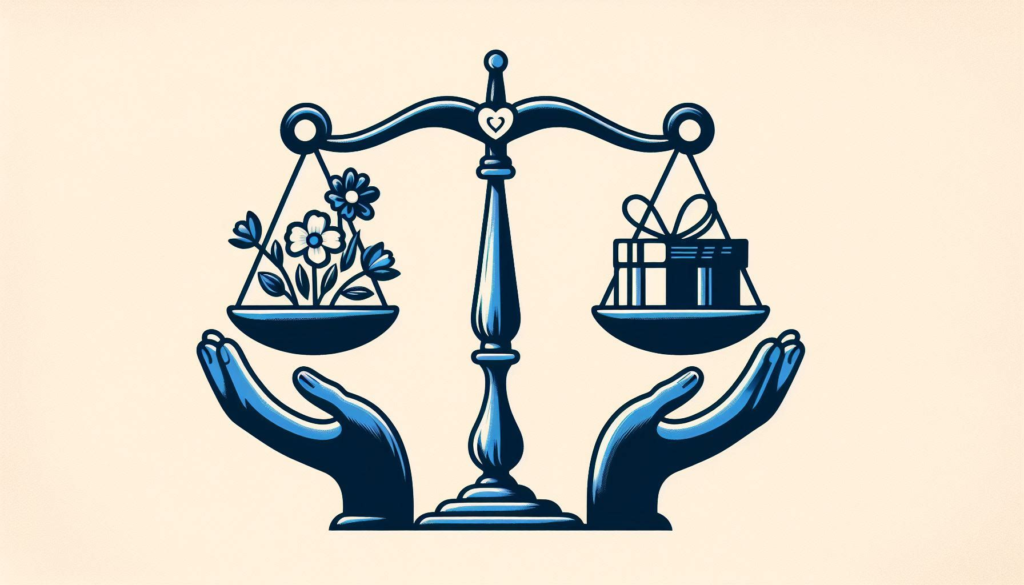
Have you ever felt obligated to return a favor, even if it was a small one? Or perhaps you found yourself more willing to help someone who had just done something nice for you? This phenomenon, known as reciprocity bias, is a powerful force that shapes our social interactions and decision-making.
What is Reciprocity Bias?
Reciprocity bias is a cognitive bias that compels us to respond to positive actions with positive actions in return, and negative actions with negative actions. It’s a deeply ingrained social norm that fosters cooperation and builds trust within communities. Imagine our early ancestors – cooperation was essential for survival. Reciprocating favors ensured access to resources, protection, and ultimately, increased chances of reproduction.
This inherent bias operates both consciously and unconsciously. We may feel a sense of obligation to repay a favor, even a minor one like a borrowed pen. Conversely, if someone treats us unfairly, we’re more likely to retaliate or withhold our help in the future.
The Science Behind Reciprocity
Social psychologists have extensively researched reciprocity bias. One of the most influential figures is Robert Cialdini, who explored this concept in his groundbreaking book, “Influence: The Psychology of Persuasion.” Cialdini highlights the principle of reciprocity as one of the six weapons of influence, demonstrating its effectiveness in shaping human behavior.
Studies have shown that people are more likely to comply with requests if the requester has done something nice for them first. For example, one experiment involved researchers approaching people on the street and asking them to complete a survey. When the researchers offered a small gift, such as a flower or a few pennies, beforehand, the compliance rate soared compared to when no gift was offered. This suggests that even a minimal gesture of generosity can trigger a feeling of indebtedness, prompting people to reciprocate by complying with the request.
Reciprocity Bias in Action: Real-World Examples
Reciprocity bias plays a significant role in various aspects of our lives. Here are some real-world examples:
- Marketing and Sales: Businesses leverage reciprocity bias to influence customer behavior. Offering free samples, providing excellent customer service, or including small gifts with purchases can create a sense of obligation, encouraging customers to make a purchase or return for future business.
- Social Relationships: Reciprocity is crucial for building and maintaining strong social bonds. When friends do favors for each other, a sense of mutual trust and obligation is established. This strengthens the relationship and encourages future cooperation.
- Negotiations: Negotiators can utilize reciprocity bias to gain an advantage. By making concessions first, they can nudge the other party to reciprocate, making them more likely to compromise and reach an agreement.
- Philanthropy: Charitable organizations often utilize reciprocity by offering small gifts, like address labels or tote bags, in exchange for donations. This initial act of giving creates a feeling of obligation, potentially leading to increased donations.
The Benefits and Drawbacks of Reciprocity Bias
Reciprocity bias offers several benefits. It fosters cooperation, builds trust, and strengthens social bonds. When people feel obligated to return favors, it creates a sense of fairness and promotes positive social interactions.
However, reciprocity bias can also have drawbacks. It can be exploited by those who understand its influence. For instance, telemarketers might use the “foot-in-the-door” technique, starting with a small request before escalating to a larger one. Additionally, the pressure to reciprocate can lead to poor decision-making. We might feel obligated to return a favor even if it’s inconvenient or not in our best interest.
How to Be Aware of Reciprocity Bias
Being mindful of reciprocity bias can help us make more informed decisions and avoid manipulation. Here are some tips:
- Recognize the triggers: Pay attention to situations where someone does something nice for you first. Be aware of the potential feeling of obligation that might arise.
- Evaluate the request: Don’t feel pressured to reciprocate immediately. Take the time to assess the request and ensure it aligns with your own interests before acting.
- Set boundaries: It’s okay to say no to requests, even if someone has done something nice for you beforehand. Communicate your limitations politely but assertively.
Conclusion: The Reciprocity Loop
Reciprocity bias is a powerful force that shapes our social interactions. Understanding its influence allows us to navigate social situations more effectively. By recognizing the triggers and setting boundaries, we can ensure that our decisions are based on genuine consideration rather than unconscious obligation. The power of “you scratch my back, I’ll scratch yours” can be a positive force for building strong relationships, but it’s important to maintain awareness to avoid manipulation. By understanding reciprocity
